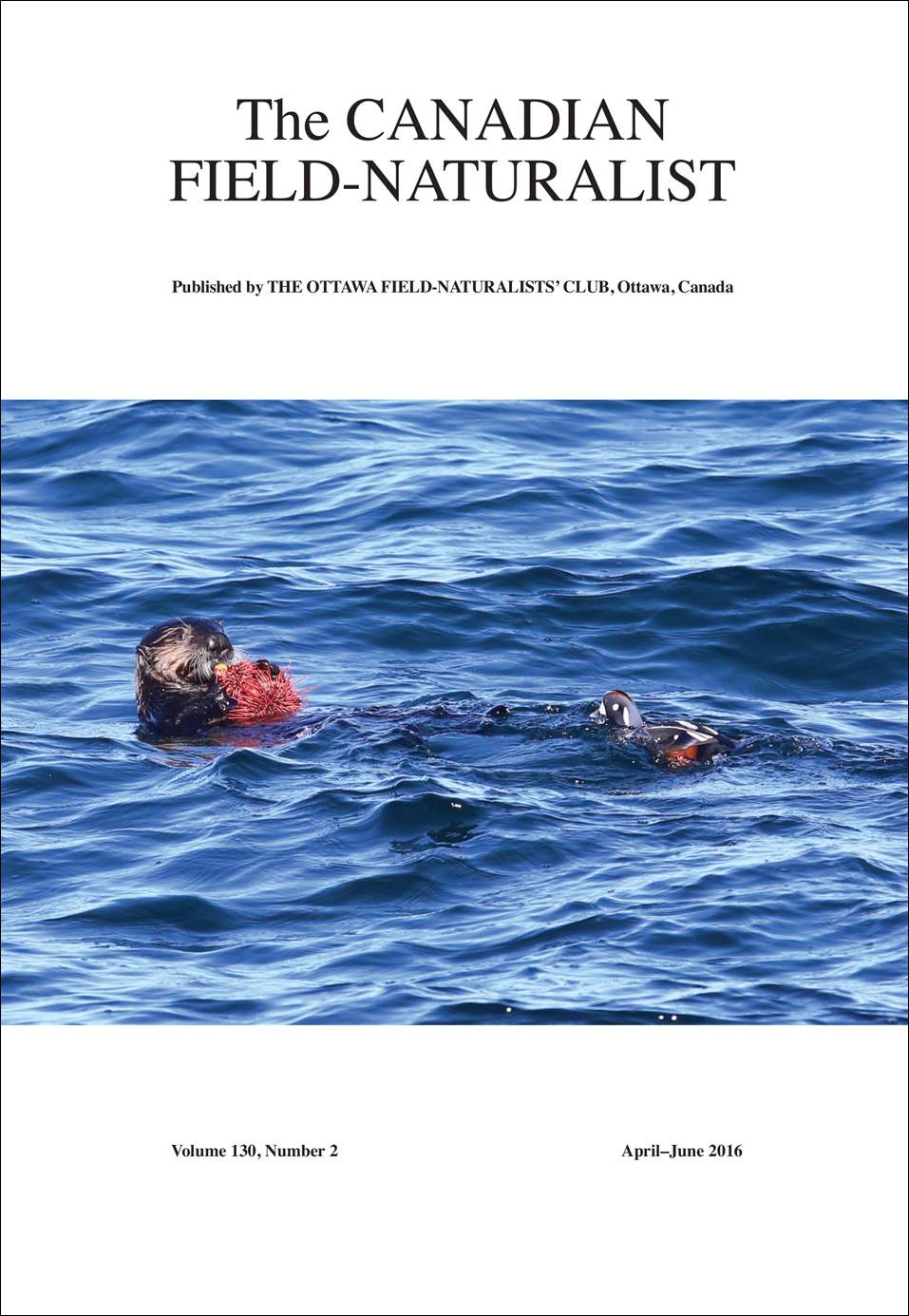Aberrant Colouration in the Atlantic Puffin (Fratercula arctica), the Common Murre (Uria aalge), and the Thick-billed Murre (U. lomvia) from Atlantic Canada
DOI :
https://doi.org/10.22621/cfn.v130i2.1837Mots-clés :
Atlantic Puffin, Fratercula arctica, Common Murre, Uria aalge, Thick-billed Murre, Uria lomvia, plumage, colouration, colour aberration, Atlantic CanadaRésumé
The colour of birds’ plumage and bare parts is an important feature in choice of mate, camouflage, thermoregulation, species recognition, and flight mechanics. Abnormalities in colouration occur in a variety of species and can have important consequences for an individual’s survival and fitness. We present 7 new cases of colouration abnormalities in 3 species of auk (Alcidae) and review previous reports to correctly assign the proper form of abnormality to specimens in museums or photographs. Of the 53 reported colouration abnormalities, we reclassified 42, progressive greying being the most common (18 or 19 cases out of 42, 43–45%), followed by brown (10/42 cases, 24%), in addition to 6 cases of melanism, 4 of dilution, 2 of partial leucism, and 1 likely somatic mutation. Properly describing the form of colour abnormality improves our understanding of the frequency, causes, and consequences of aberrant colouration.Téléchargements
Publié-e
Numéro
Rubrique
Licence
Copyright for Canadian Field-Naturalist content is held by the Ottawa Field-Naturalists' Club, except for content published by employees of federal government departments, in which case the copyright is held by the Crown. In-copyright content available at the Biodiversity Heritage Library is available for re-use under a Creative Commons Attribution-NonCommercial-ShareAlike 4.0 (CC BY-NC-SA 4.0) licence. For usage of content at the BHL for purposes other than those allowed under this licence, contact us.
To request use of copyright material, please contact our editor, Dr. Dwayne Lepitzki: editor -at- canadianfieldnaturalist -dot- ca





